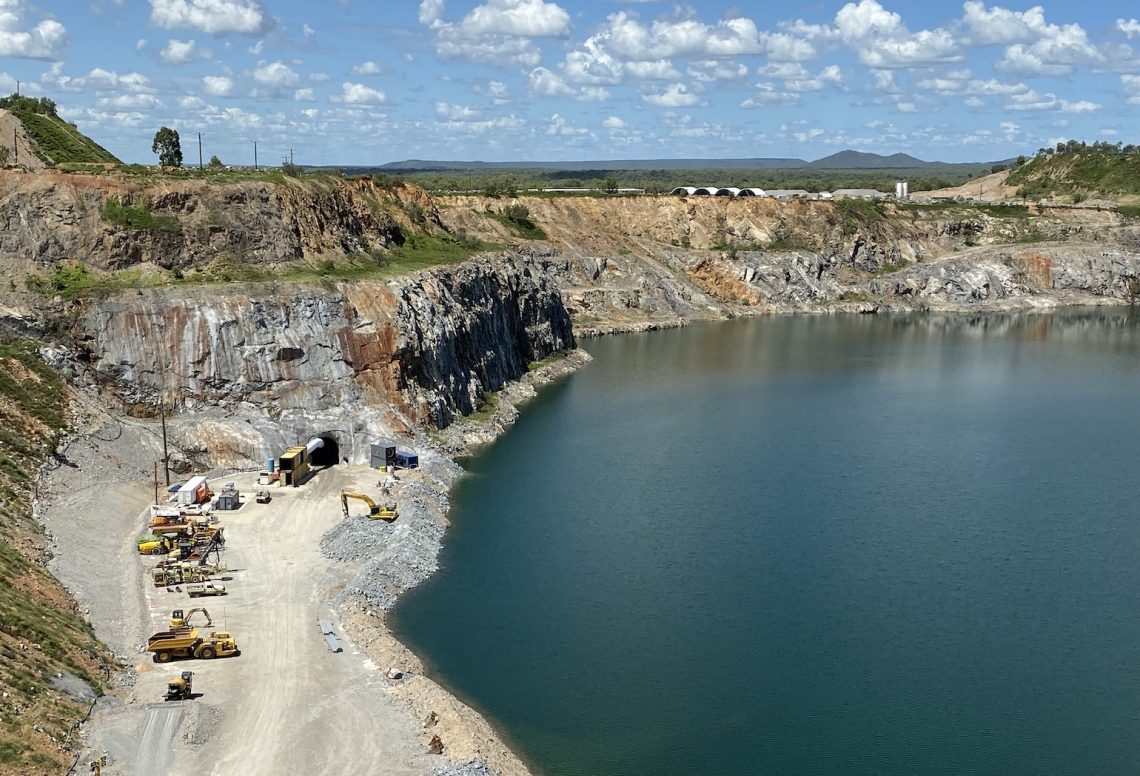The Kidston Pumped Storage Hydro Project (K2-Hydro) is the first of its kind in the world to utilise an abandoned gold mine. Once completed, it will become the third largest electricity storage facility in the country.
The flagship project of the Kidston Clean Energy Hub in Far North Queensland, K2-Hydro, is integrated with the 50 MW Genex Kidston Solar project, with a wind farm to be added in the future. It will create 900 direct jobs and will help Queensland achieve its renewable energy target of 50 per cent by 2030.
Andrew Wilson, Group Technical Director at construction firm McConnell Dowell, says that the renewable energy hub is the first privately funded project of its kind.
“Repurposing an abandoned gold mine is a world-first. Mines have a finite lifespan, and one just sitting there is an environmental liability,” he says.
Wilson says there are pros and cons to using existing mine pits.
“For example, being a remote site, it helped that there was a lot of infrastructure in place already, such as mining accommodation, solid road access and an airstrip.
“One of the downsides is that the site is a long way from the electricity grid and a new transmission line needs to be constructed for the grid connection.”
Wilson says one particularly difficult challenge for the engineers was that they were creating a dam out of the mine’s rock waste.
“The upper dam is going to be an HDPE-lined rockfill dam using the mine waste rockfill, and what we found is that the foundation conditions – due to the nature of the rock waste – was more variable than we thought.” he says.
“We had to work very closely with designers and do a lot of geotechnical testing to find the layers that were sufficiently impermeable. Then we had to do a number of embankment trials to work out the best way to actually construct the dam out of these materials, taking into account the variability.”
The Kidston project will be able to generate 250 MW for eight hours, or 2000 MWh in total – that’s enough to power 160,000 households. When it’s not being used, water will be pumped to the upper dam using surplus off-peak electric power.
Wilson says that pumped hydro will continue to play a critical role in the transition to renewable energy as it fills the gaps in the grid in the absence of sun and wind.
“A renewable energy grid with very high levels of penetration – greater than 80 per cent – is just not viable if you don’t have energy storage,” he says.
“Batteries are an option for short term storage, but they can’t supply the very high capacity long term storage that pumped hydro provides. They also have their own challenges around how environmentally friendly they actually are, but pumped hydro has been around for a century – it’s very well proven.”
K2-Hydro is a remarkable feat of engineering. Wilson believes that its success began in procurement.
“This was a very collaborative effort between all parties over four years. We faced the challenges of a multidisciplinary team working across a number of continents during COVID-19,” he says.
“The client got our team and the designers working together from a very early stage of the project development. That really helped us find solutions along the way, because a lot of different elements came up that could have derailed everything.
“Using technology to work collaboratively on the design, including using 3D digital modeling, was a first for many on the project.”
To find out more about K2-Hydro, visit the McConnel Dowell website or watch this explainer video.




